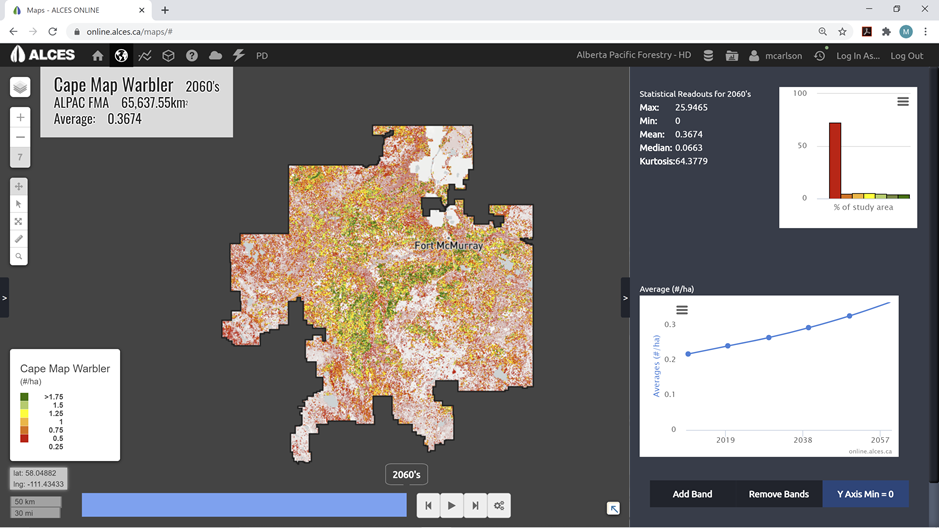Research applied the ALCES Online simulation model to simulate bird response in northeastern Alberta

A paper published in Frontiers in Ecology and Evolution presents a modeling study exploring long-term bird population responses in northeastern Alberta (frontiersin.org/articles…). IEG ecologist Matt Carlson, one of the paper’s authors, worked with postdoctoral researcher Lionel Leston of the University of Alberta to use ALCES Online to simulate the impacts of forestry, oil development, and fire to forest disturbance and industrial footprints such as roads and well sites over the next 5 decades. The simulations built upon scenarios simulated using the Patchworks model that were focused on forestry. Outcomes from both models were linked to statistical relationships that predict songbird density, making it possible to explore the implications of future scenarios to songbirds in the Alberta-Pacific Forest Management Agreement area. Average forest age was found to increase during the simulations, which resulted in a positive response by species associated with older forest habitat. Including energy development in the simulations tended to have a negative effect on songbird response, whereas restoration of energy sector footprint created songbird habitat. Because songbirds where sensitive not only to forestry but also energy development and fire, the authors concluded that conservation and land use planning should consider the cumulative effects of multiple human impacts rather than solely focusing on a single land use such as forestry. The research was supported by Alberta-Pacific Forest Industries, Inc.


